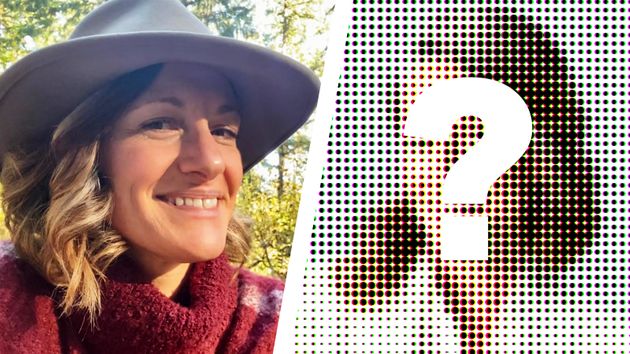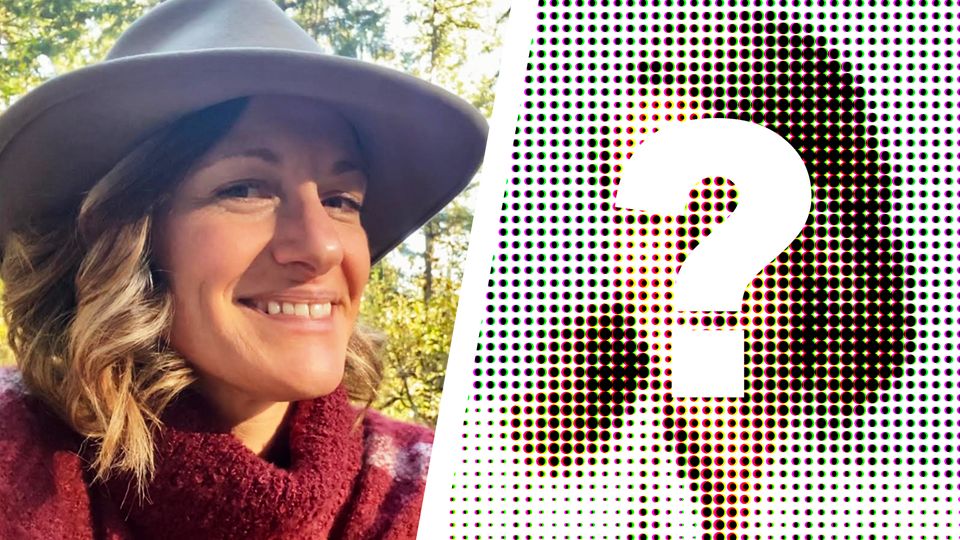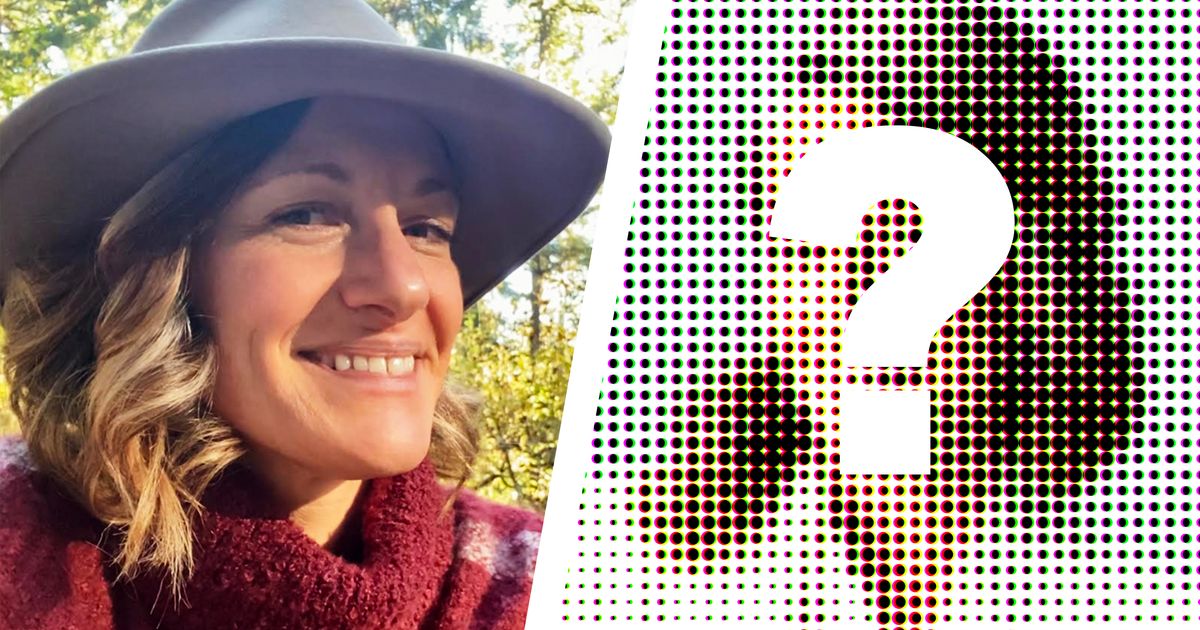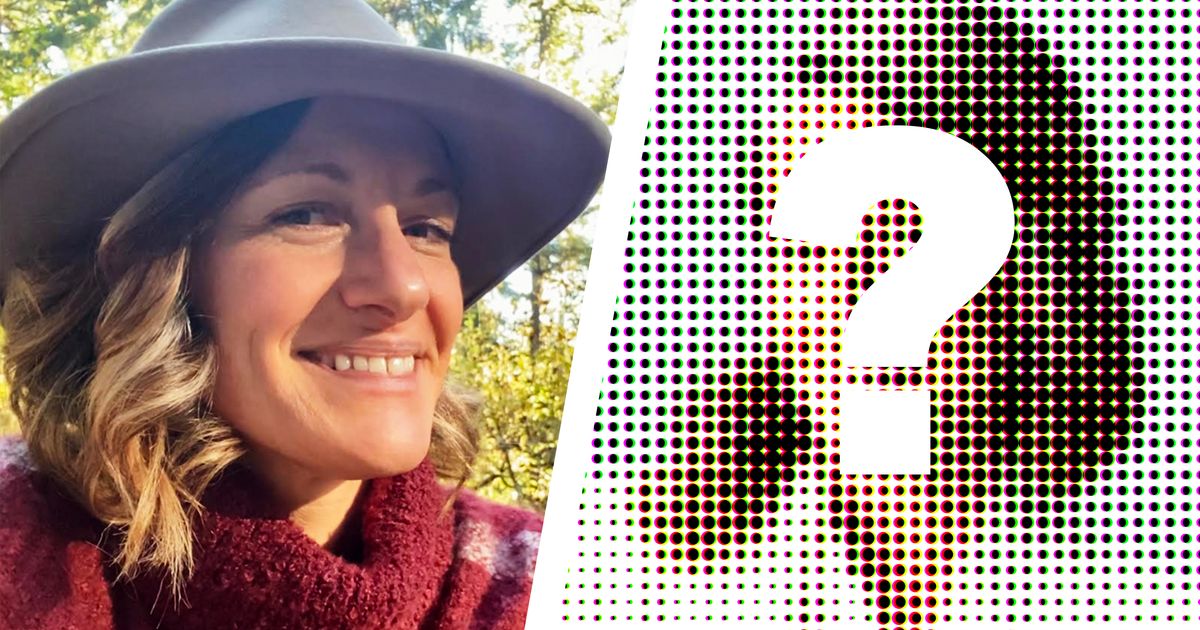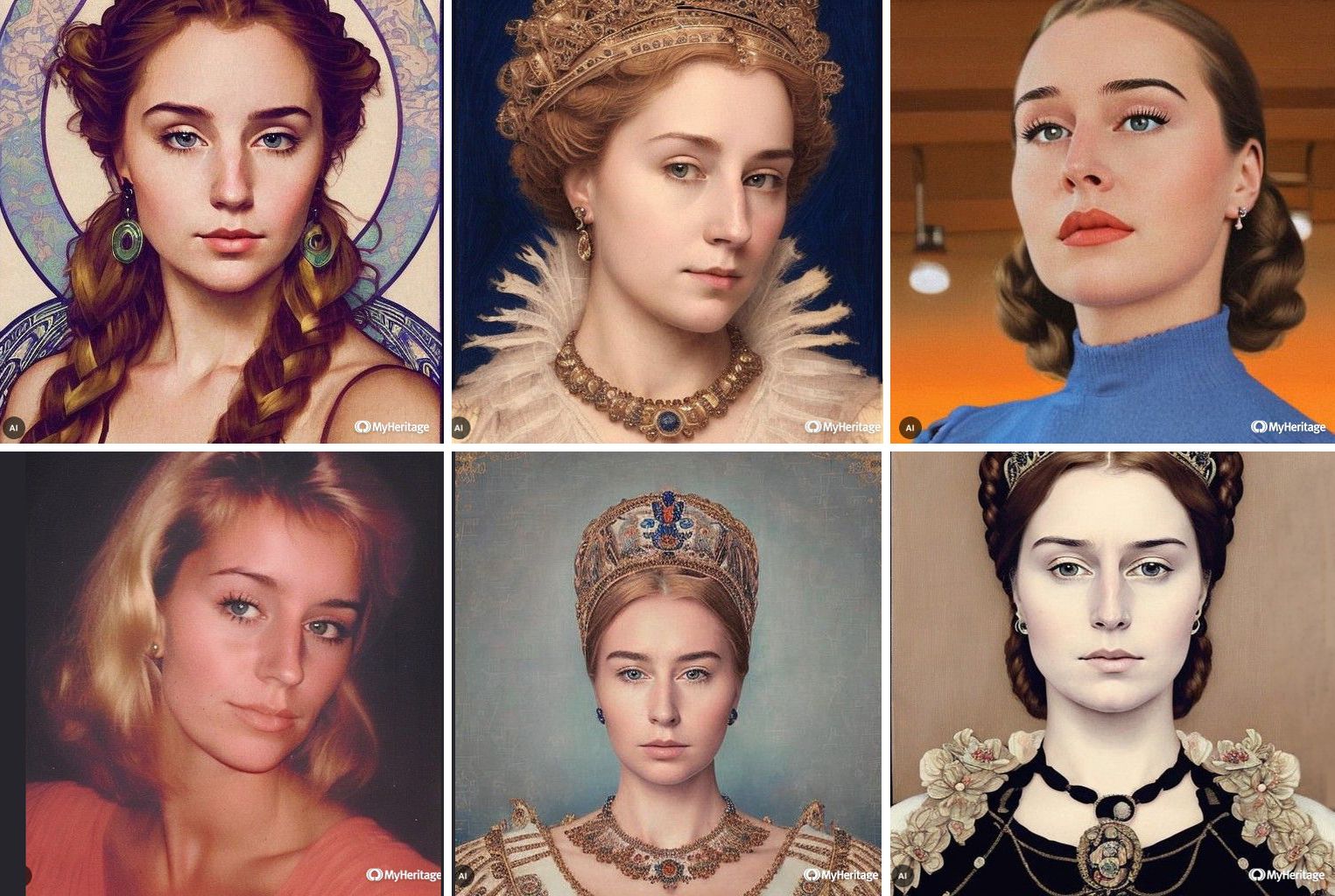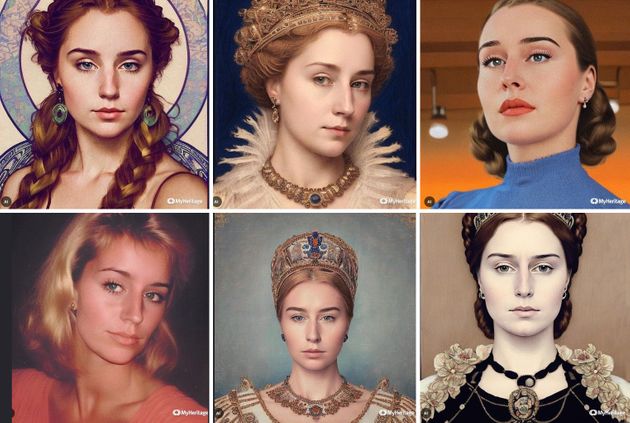I was scrolling my Facebook feed one sleepless night when a post by a fellow member of a women’s business group caught my eye. She was sharing her new headshots, and they were, well, gorgeous.
She looked healthy and radiant ― the soft natural light perfectly illuminating her glowing skin ― and she seemed both professional and approachable at the same time.
Advertisement
I’d recently been comparing headshot packages from photographers in my area, and this woman’s photos were exactly what I was looking for: polished, elegant, well-composed. I decided to pin a few of her pics to my headshots board on Pinterest so I could show them as inspiration to my own photographer when I finally selected one.
But when I looked at her caption again, something else about it grabbed my attention: the price tag. Her beautiful headshots ― a gallery of 35 unique images in total ― had set her back just $25.
I definitely needed to know more.
I clicked to expand the full text of her post and took a minute to actually read what she wrote. It turned out her photo shoot wasn’t a “shoot” at all. Instead, these images were produced by artificial intelligence (AI). She explained that she uploaded 20 pictures of herself to a website and two days later received a link to a gallery of images of herself ― but not herself ― in various settings and styles of attire.
Her photos had been generated by a process in which real images of a subject are used to create a data set from which new images can be derived. Once this data has been collected and a “model” has been generated, which includes an infinite number of details about a person’s physical appearance, an endless array of artificial images can be created in that person’s likeness. The “person” spawned from this accumulation of data can then be dressed in different clothing, styled in different ways and placed in different locations. They can also have different makeup, hair colours, jewellery and other accessories… all while retaining the features of the original subject. At least in theory.
Advertisement
Curious, I clicked on my Facebook contact’s profile photo to see what she typically looks like. It was kind of amazing. The AI photos did in fact look like her ― made up, well lit, well dressed and maybe retouched a little. Basically they looked like her on a good day, in a great space and with a bit of post-production magic applied.
Now I was genuinely intrigued. The $25 price was a tiny fraction of the quotes I’d received from local photographers I’d reached out to, and while I am a big advocate of shopping locally and supporting other creatives, I was launching a new venture and it wasn’t yet producing revenue. I needed stopgap photos to use on my website and social feeds until I was actually earning money and could to hire a real photographer. I decided I was willing to risk $25, and I clicked through my FB buddy’s original post to the website of the company that had created her photos.
Like her, and likely thousands of other people, I uploaded my own images to the site, carefully following the instructions to select pictures that show my face in good light and from a number of angles so that the AI could create a model that was as detailed and realistic as possible. Once I was happy that I’d given the AI all the tools it needed to re-create me, I hit the submit button. Then I waited.
The company promises delivery within 48 hours. Starting at around the 40-hour mark, I started refreshing my email compulsively, every 10 minutes or so, to see if the gallery link had arrived when I wasn’t looking. I was so anxious to see what the new and improved me would look like! Would she be wearing my style of clothing, and how do they decide what clothes to put the “model” in anyway? Would she have my laugh lines, or does the AI edit out what it sees as “imperfections”? Would she really look like me ― like, “fool-my-dad look like me”? ― or would I be disappointed and have to chalk up a $25 loss to the cost of starting a new business? So many questions!
I had momentarily forgotten that I was waiting to meet the new me when I was half-awake and clicked on my email in the middle of the night. There it was: a link to a downloadable zip file labeled “Your Gallery.” My heart sped up. I couldn’t unzip the file on my phone, so I hauled myself out of bed, into my robe and downstairs to my office to open it on my computer. There was no way I was waiting until morning.
Advertisement
There, sitting at my desk at 3am, I opened up the gallery and clicked on the first thumbnail.
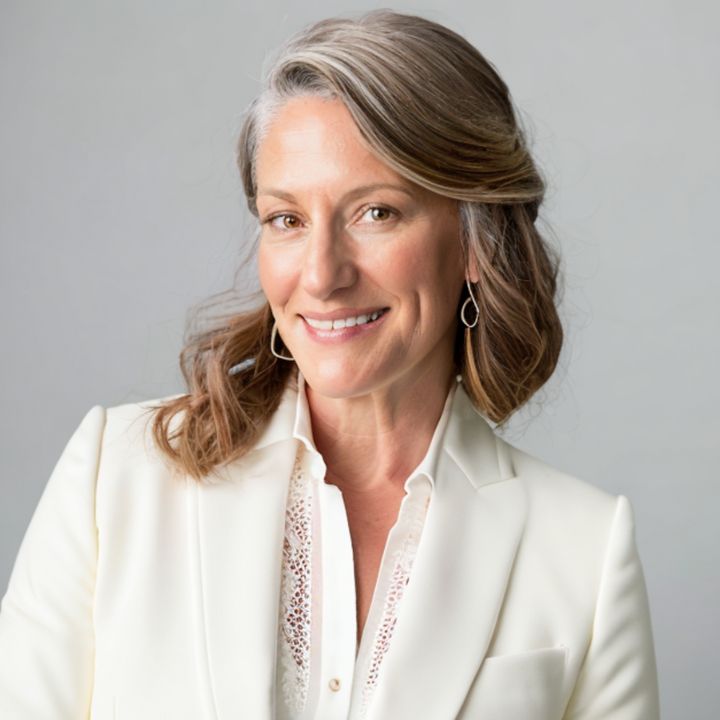
Courtesy of Natasha Dworkin
It was me, sort of. I was wearing a crisp white linen blazer and tasteful jewellery. My hair was swept into a sophisticated updo. My ears were adorned with a pair of modern, geometric earrings. My smile said “Hello there. I’m kind. And professional. And also very stylish.” It was like the person who I might have become had I followed my 19-year-old self’s dream of being an interior designer.
I clicked on the second photo. In this one, I was outdoors, glancing toward the horizon with a wise, knowing look. I wore a lush floral halter dress, and my tousled hair was subtly tinted in burgundy. I was lithe and tanned. This was the me who traveled the world with only a backpack before settling in Bali as a yoga teacher.
In the third and fourth images I am a confident, driven lady boss. I appear smart and strong, yet emotionally intelligent, the CEO of a major international conglomerate that also has a social conscience ― known for its fair labor practices, sustainable product lines and generous parental leave.
It went on like this as I continued to peruse my gallery of doppelgänger Natashas, each one decidedly me but also decidedly not me. It was a me I didn’t recognise, wearing clothes I hadn’t seen before, in places I’d never been.
Advertisement
In a way, she was intoxicating ― 35 little windows into alternate versions of my life, reflecting different choices, different turns taken, different worlds inhabited. She was also just a little bit better than me. I mean that in the way that we always look better in our headshots or any studio photos thanks to optimal conditions and a skilled photographer, but this person was also better better.
She didn’t just look better. She wasn’t just dressed better. She had done better in life. She’d done better keeping her waistline trim after the baby. She’d taken up a real skincare routine earlier than I had. She’d secured the book deal and been offered the promotion and she’d gotten the guy. She’d done the right things at the right times, and everything had worked out for her. She was golden. Golden Me.

Courtesy of Natasha Dworkin
I somewhat sheepishly posted one of the photos of Golden Me — the one that, from my point of view at least, looked the most realistic, the most believable, on Facebook. I didn’t say anything about it ― I just benignly swapped out my profile pic. I wanted to see what would happen.
Within minutes my feed was blowing up. “Gorgeous!” said one friend. “Look at you!” said another. “Absolutely stunning.” “You look amazing.” “Beautiful woman!” declared friends who’d known me since childhood. My dad loved the image. They all believed Golden Me was actually me. Mission accomplished. Right?
Advertisement
Not so much. I started to feel weird about this other me. On the one hand, I wanted people to think the photo was real, and it felt kind of good when they did. On the other hand, it felt dishonest.
Every one of us must wonder from time to time ― especially those of us who have arrived in life’s middle years ― what our experience might have been like, what we might have been like, if we’d taken a different road, stayed in a particular relationship, left another, taken up a certain hobby or followed another career path. We’ve all surely questioned our choices from time to time, had regrets, thought wistfully about the what-ifs and the could-have-beens.
Meeting Golden Me was like looking at the digital embodiment of the answers to all those questions. All the mes that could have been, maybe even should have been, and that certainly are not.
And putting one of those pictures out into the world where my friends and family could marvel at it felt like presenting a facade to people who already love me as I am. Why would I trade that love and acceptance for social media points and a couple of minutes of feeling like I’d somehow won the best-self lottery?
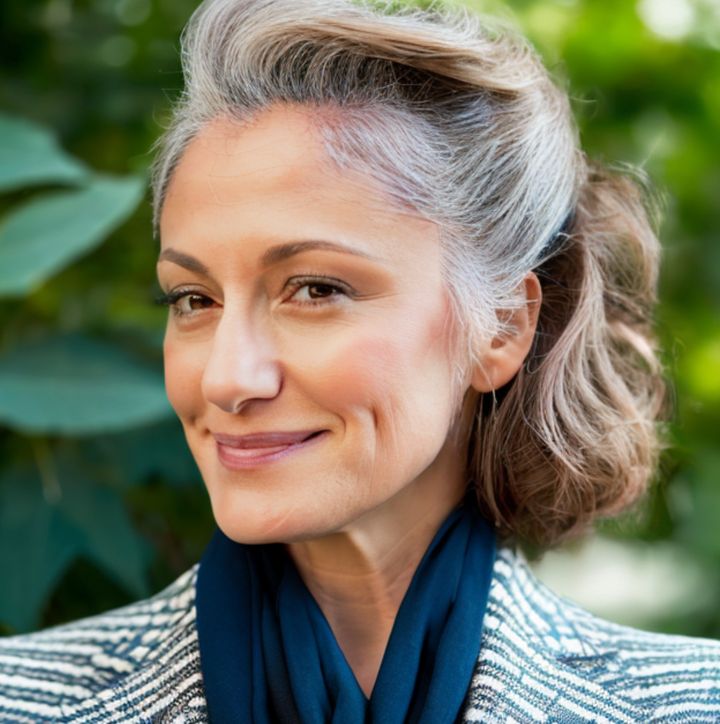
Courtesy of Natasha Dworkin
Advertisement
The fact is that all the choices I’ve made and all the roads I’ve taken may not have led me to the executive suite of a multinational company or to a tropical Balinese yoga studio, but they’ve led me to the version of myself that I am today: mama to the sweetest little boy ever, user of my gifts to help others, community builder, loving friend, loyal daughter, budding gardener, deep thinker.
And that me, with her laugh lines and her amateurish makeup and her postpartum body, is pretty darn golden, too. In our own photos ― our real photos of our real selves ― lie our stories: moments in time captured, life’s details memorialised to be looked at later and remembered.
What would I say when my son looks at an image of Golden Me and asks where I was when that photo was taken, who I was looking at or what I was smiling about? What are we left with if the pictures, the moments, the memories and the stories aren’t real?
We’re left with pixels.
I quietly changed my profile picture back to a real one, a selfie taken just weeks ago on the land where I grew up, wearing my favourite cozy poncho. When my son looks at that photo years from now, he will know without even thinking about it that it was taken in the place I love most in the world. He’ll see my smile and the cool forest breeze blowing my hair, and he’ll recognise it all. He’ll recognise me.
I resolved to chalk this experience up not as a loss but, like so many other things in life, as a lesson. And $25 to discover that I like the real me, my real life, my real story ― even with all its tarnished bits ― more than I do some gilded fantasy version of it is, in my opinion, money well spent.
Advertisement
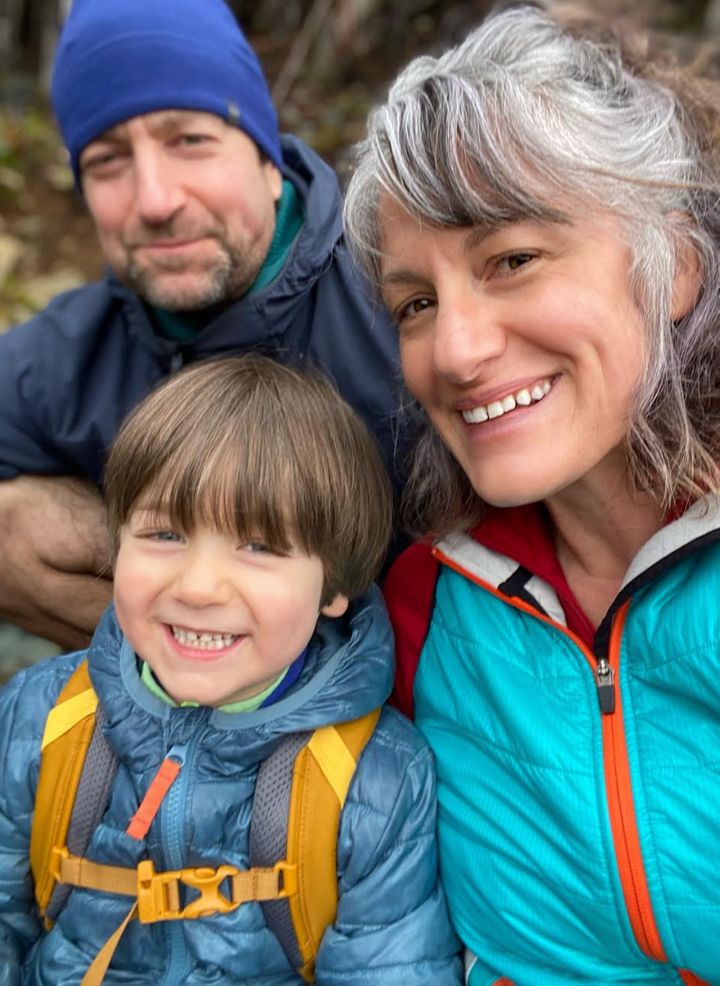
Courtesy of Natasha Dworkin
Natasha Dworkin is an agency founder and strategic storyteller. For more than 20 years she has helped her purpose-driven clients tell their stories, amplify their impact and change the world. She now leverages her professional expertise with her personal experience, becoming a first-time mom at the age of 46, to help other midlife women make transformative change in their own lives. Connect with her at midlife.mom and on Instagram at @midlife.mama.

